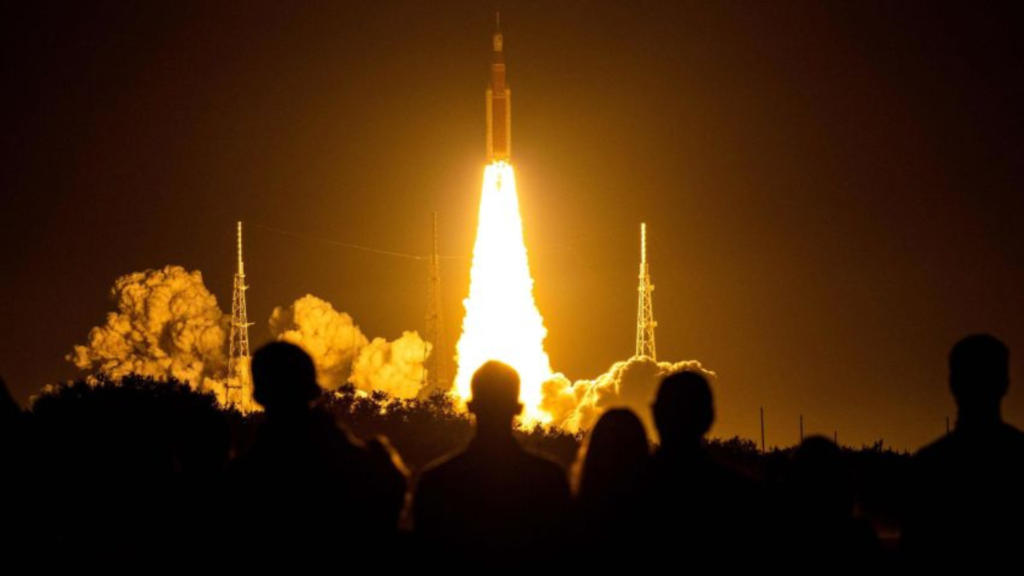The historic Artemis I mission took flight in the early hours of Wednesday morning after months of anticipation. The milestone event kicked off a journey that will send an uncrewed spacecraft around the moon, paving the way for NASA to return astronauts to the lunar surface for the first time in half a century.
The Orion spacecraft’s spectacular first views of Earth were shared more than nine hours into the journey, with the vehicle about 57,000 miles away from our planet on its way to the moon.
It’s the first time since the final Apollo mission in 1972 that a spacecraft designed to carry humans to the moon has captured a view of Earth.
The towering, 322-foot-tall Space Launch System or SLS rocket lit its engines at 1:47 a.m. ET. It emitted up to 9 million pounds of thrust to haul itself off the launchpad in Florida and into the air, streaking vibrantly across the night sky.
Atop the rocket was the Orion spacecraft, a gumdrop-shaped capsule that broke away from the rocket after reaching space. Orion is designed to carry humans, but its passengers for this test mission are of the inanimate variety, including some mannequins collecting vital data to help future live crews.
The SLS rocket expended millions of pounds of fuel before parts of the rocket began breaking away, and Orion was left to soar through orbit with just one large engine. That engine then set off two powerful burns to put the spacecraft on the correct trajectory toward the moon. Then, about two hours after liftoff, the rocket engine also fell away, leaving Orion to free-fly for the remainder of its journey.
Nearly eight hours after launch, Orion experienced its outbound trajectory correction burn, a mission milestone that ensures the spacecraft stays on the right path. The burn sets Orion up for its lunar flyby and closest approach of the moon on November 21 before entering a distant retrograde orbit around the moon on November 25.
There are 24 cameras on the rocket and spacecraft – eight on SLS and 16 on Orion – to document essential mission events, including liftoff, ascent, solar array deployment, external rocket inspections, landing, and recovery, and capture images of Earth and the Moon.

